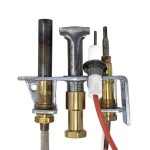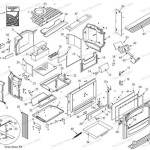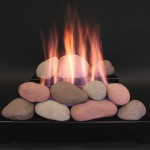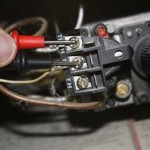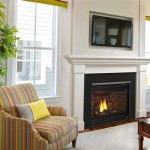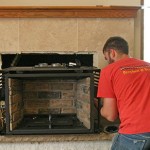```html
Gas or Electric Fireplace: A Comprehensive Comparison
Choosing between a gas and an electric fireplace involves careful consideration of various factors, including installation costs, heating efficiency, aesthetic preferences, and maintenance requirements. Both types offer distinct advantages and disadvantages, making the optimal choice dependent on individual needs and priorities. This article provides a detailed comparison to assist in making an informed decision.
Initial Costs and Installation
The initial cost of a fireplace encompasses not only the unit itself but also the installation expenses. Generally, electric fireplaces have a lower upfront cost than gas fireplaces. Electric fireplaces are often available as freestanding units or wall-mounted models, requiring minimal installation. A standard electrical outlet is typically sufficient for operation, making installation relatively simple and inexpensive.
Gas fireplaces, on the other hand, usually involve more complex installation procedures. They necessitate a gas line connection, which may require professional plumbing work. Furthermore, venting is crucial for gas fireplaces to safely exhaust combustion byproducts. This venting can involve installing a chimney or a direct vent system, adding to the overall installation cost. Depending on the existing infrastructure and the specific requirements of the installation, the cost of installing a gas fireplace can be significantly higher than that of an electric fireplace.
The cost differential can be further exacerbated if a new gas line needs to be run to the desired location. This can involve trenching, permits, and other construction-related expenses. Therefore, potential buyers should obtain detailed cost estimates for both gas and electric options, factoring in all installation-related charges, before making a final determination.
Heating Efficiency and Performance
Heating efficiency refers to the ability of a fireplace to convert energy into usable heat. Gas fireplaces generally offer higher heating efficiency compared to electric fireplaces. Gas fireplaces produce a hotter, more intense heat, effectively warming larger spaces. They are capable of generating substantial BTUs (British Thermal Units), a measure of heat output, and can serve as a supplemental heat source for an entire room or even a small home.
Electric fireplaces primarily function as supplemental heaters, best suited for smaller rooms or zones. While they can provide sufficient warmth for localized heating, they may struggle to effectively heat larger areas. Electric fireplaces use heating elements to generate heat, and their BTU output is typically lower than that of gas fireplaces. The heating capacity of an electric fireplace is often limited by the electrical circuit amperage, which restricts the amount of power it can draw.
Furthermore, the type of heat produced differs between the two. Gas fireplaces radiate heat, warming objects and people directly through infrared radiation. This radiant heat feels more natural and comfortable. Electric fireplaces, in contrast, primarily use convection to circulate warm air. Convection heating can sometimes result in uneven temperature distribution within a room, with warmer air accumulating near the ceiling.
Aesthetics and Visual Appeal
Aesthetics play a crucial role in the selection of a fireplace. Both gas and electric fireplaces offer a variety of designs and styles to complement diverse interior decor. Gas fireplaces often feature realistic-looking artificial logs and flames, creating a traditional fireplace ambiance. The flame appearance in gas fireplaces is generally considered more authentic due to the actual combustion process.
Electric fireplaces have made significant strides in replicating the visual appeal of a real fire. Modern electric fireplaces often utilize sophisticated LED technology to project realistic flame effects. Some models offer adjustable flame colors, brightness levels, and even ember bed details, allowing for customization of the visual experience. While electric fireplace flames may not be identical to real flames, they can still provide a convincing and aesthetically pleasing simulation.
The design versatility of electric fireplaces is a distinct advantage. They are available in various styles, including traditional, contemporary, and modern designs. Wall-mounted electric fireplaces can create a sleek, minimalist look, while freestanding models offer portability and flexibility in placement. Ultimately, the choice depends on individual preferences and the desired aesthetic for the living space.
Maintenance and Safety
Maintenance requirements differ significantly between gas and electric fireplaces. Gas fireplaces require regular maintenance, including annual inspections by a qualified technician. These inspections ensure the proper functioning of the gas line, venting system, and burner components. Cleaning the burner assembly and checking for gas leaks are essential maintenance tasks. Neglecting maintenance can lead to safety hazards such as gas leaks or carbon monoxide poisoning.
Electric fireplaces generally require minimal maintenance. Periodic cleaning of the unit's exterior and dusting of the heating element is typically sufficient. There are no combustion byproducts to worry about, eliminating the need for venting or gas line maintenance. Electric fireplaces are considered safer than gas fireplaces due to the absence of open flames and combustible fuels.
However, it is crucial to ensure that the electrical circuit is properly rated to handle the power consumption of the electric fireplace. Overloading the circuit can pose a fire hazard. It is also advisable to periodically inspect the power cord and plug for any signs of damage. Maintaining a clear area around the fireplace and keeping flammable materials away are important safety precautions for both gas and electric models.
Environmental Impact
The environmental impact of a fireplace is an increasingly important consideration for many consumers. Gas fireplaces burn fossil fuels, which release carbon dioxide and other greenhouse gases into the atmosphere, contributing to climate change. While modern gas fireplaces are designed to be more efficient and cleaner-burning, they still have a carbon footprint.
Electric fireplaces, on the other hand, do not directly produce emissions. Their environmental impact depends on the source of electricity used to power them. If the electricity is generated from renewable sources such as solar or wind power, the environmental impact of an electric fireplace is minimal. However, if the electricity is generated from coal-fired power plants, the environmental impact can be significant.
Consumers concerned about their carbon footprint should consider the source of their electricity and explore options for using renewable energy sources to power their electric fireplaces. Additionally, energy-efficient electric fireplace models can help reduce energy consumption and minimize environmental impact. The overall environmental impact of a fireplace is a complex issue that requires careful consideration of the energy source and the efficiency of the unit itself.
Control and Operation
The control and operational features also play a significant part in the user experience. Most gas fireplaces come with a remote control or wall-mounted thermostat, allowing for convenient control of the flame height, heat output, and on/off functions. Some advanced gas fireplaces offer programmable timers and smart home integration, enabling users to control the fireplace remotely through their smartphones or other devices.
Electric fireplaces also provide a range of control options. Many models feature remote controls for adjusting the flame effect, heat output, and timer settings. Some electric fireplaces have built-in thermostats that automatically regulate the temperature to maintain a consistent level of warmth. Smart electric fireplaces offer similar smart home integration capabilities as gas fireplaces, allowing for remote control and automation.
The operational features can significantly enhance the convenience and usability of a fireplace. Users who prioritize ease of use and remote control capabilities may find both gas and electric fireplaces appealing. The specific control options available will vary depending on the model and manufacturer, so it is essential to research the features offered by different units before making a purchase.
```
Gas Vs Electric Fireplaces Montigo

Gas Fireplaces Vs Electric Bowden S Fireside

Electric Vs Gas Fireplace Pros And Cons Homeadvisor

Breaking Down Gas Vs Electric Fireplaces Comfort Solutions

Gas Vs Electric Fireplace What S The Difference Bob Vila

Advantages Of Gas Vs Electric Fireplaces

Should I Buy A Gas Or Electric Fireplace What Is The Difference
Gas Wood Pellet Electric Which Fireplace Or Stove Is Right For You Marshall S Inc

Fireplace Usage Cost Calculator

ᑕ❶ᑐ Gas Or Electric Fireplace Which Is Better For You

